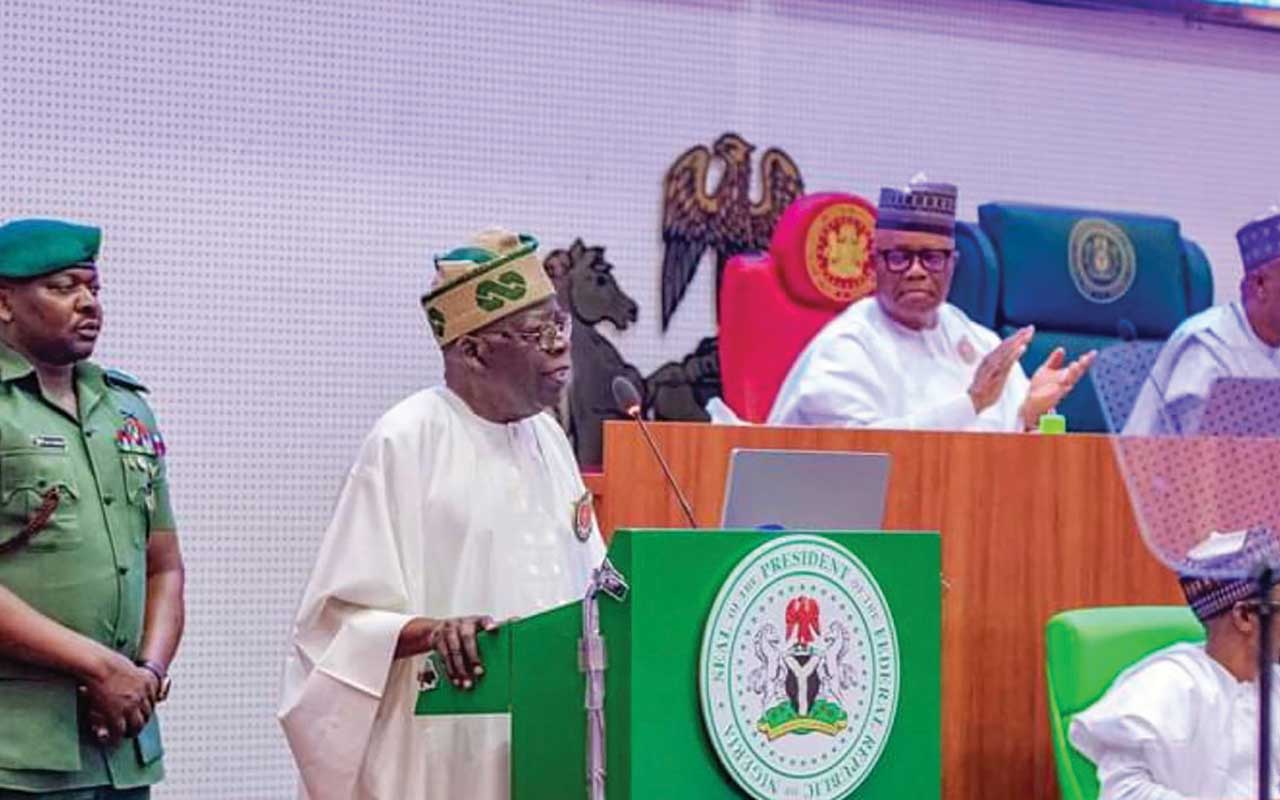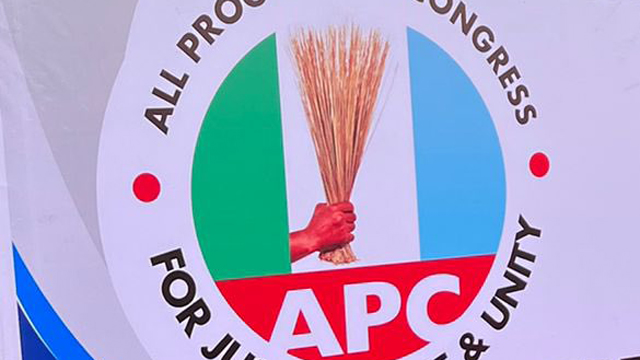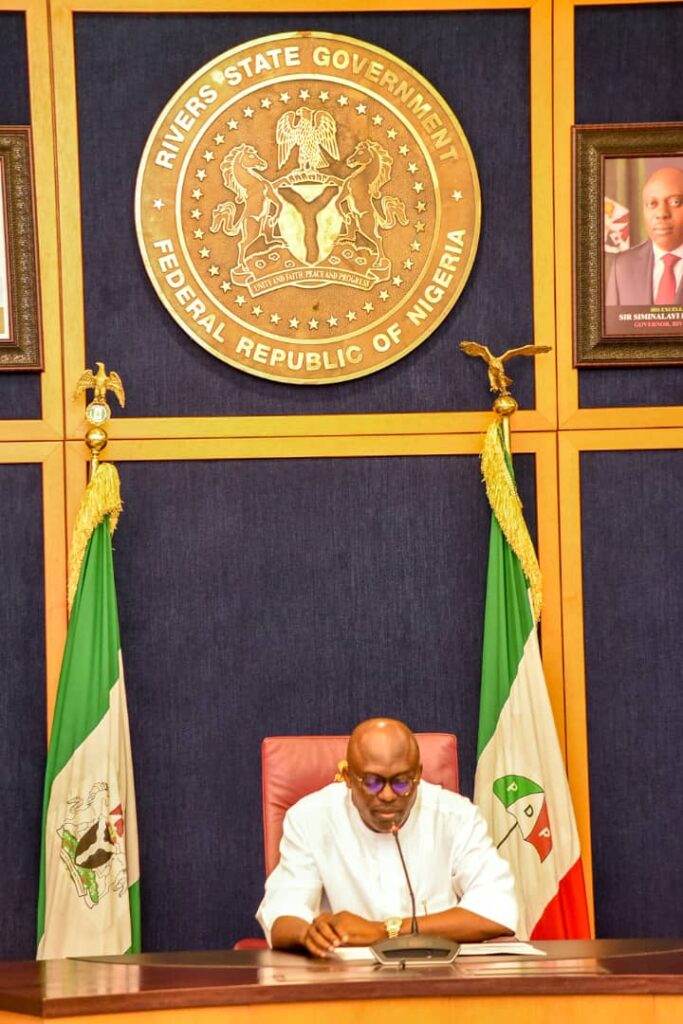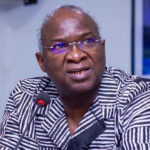
• Experts Raise Red Flag Against Bogus Wage Increase
• It’s A Tricky Situation, Says Yusuf
As Nigerians wait for the transmission of a new National Minimum Wage Bill to the National Assembly by President Bola Ahmed Tinubu, employers and workers across the country are holding their breath over the final figure that will be announced by the Federal Government and how it would affect them.
President Tinubu during a broadcast to commemorate Democracy Day, last Wednesday, said he would soon send a National Minimum Wage Bill to the National Assembly for passage.
“We have negotiated in good faith and with open arms with organised labour on a new national minimum wage. We shall soon send an executive bill to the National Assembly to enshrine what has been agreed upon as part of our law for the next five years or less,” the President said.
However, the Nigeria Labour Congress (NLC) and the Trade Union Congress (TUC) yesterday urged him to consult them before submitting any figure as a new minimum wage to the National Assembly.
The two labour groups said this would help maintain industrial harmony in the country.
They also added that they would demand the payment of new minimum wage arrears no matter how long it took the President to sign it.
NLC President, Joe Ajaero, and his TUC counterpart, Festus Osifo, stated this on the sideline of the ongoing International Labour Conference in Switzerland.
Ajaero said: “We do not expect the President to present a final figure to the National Assembly without consulting with organised labour, employers and state governors. Everyone will still come together for discussion before the transmission to the National Assembly.”
When asked by reporters about the exact figure contained in the report submitted to the President, the NLC president denied knowledge of its content. He insisted that they did not sign the report.
He added: “We have not seen the content of what has been submitted to the President. We will insist on seeing the content and appending our signatures to every page. We will not append our signatures to any page we are not comfortable with.
“As representatives here, we cannot specify the exact amount until we consult, review the offers and determine what is fair for Nigerian workers.”
Osifo added that even after transmission to the National Assembly, labour would continue to lobby and push for a favourable figure for workers.
He explained that the reason minimum wage arrears would be demanded was because of growing inflation on a daily basis, which he said has impacted negatively on workers.
“It took about two years to conclude the last minimum wage negotiation. That duration was due to fewer challenges compared to what we face now. Food prices are high, the Naira is devalued and energy costs have escalated.
“Currently, urgency is paramount. We don’t have the luxury of time. Negotiations began in January, and we are already discussing sending a bill to the National Assembly for a new minimum wage law.
“Since April 18, Nigeria has lacked a minimum wage law. However, I assure Nigerians that labour will demand arrears payment, regardless of when the new law takes effect,” Osifo said.
These pronouncements have left the country’s work force and employers wondering what would become their fate in the coming days as the organised labour had rejected earlier offers made by the government even as the Organised Private Sector (OPS) insisted that whatever amount to be agreed upon must be sustainable.
Meanwhile, experts have warned the organised labour to ensure that their agitation is within a realistic band of what all parties can pay to avoid dire consequences on the economy and possible layoff of workers.
The current agitation is the fallout of President Tinubu’s economic policies, which has led to high cost of living in the country. The organised labour is seeking a comprehensive reassessment and adjustment of the national minimum wage in 2024. The latest revision, implemented in 2019, set the minimum wage at N30, 000, a significant increase from the previous N18, 000 established in 2011.
While the Federal Government offered N60, 000 as minimum wage from the N30, 000 implemented five years ago, the labour unions had presented N494, 000, which many state governors and the private sector described as unrealistic.
Not okay with the government’s position, the organised labour, comprising the Nigeria Labour Congress (NLC) and Trade Union Congress (TUC), on June 3, 2024, embarked on a nationwide strike to compel the government to shift ground. The strike was called off the following day to give room for continuation of negotiations.
Considering the pressure, a week ago, the Federal Government conceded and increased the proposed minimum wage from N60, 000 to N62, 000, while the organised labour lowered its demand from N494, 000 to N250, 000.
But just a few hours to the Federal Government’s announcement, the Nigeria Governors’ Forum (NGF), a body involving the 36 state governors, which agreed that though a new minimum wage is due, insisted that even the N60, 000 proposed earlier was not sustainable.
This did not go down well with the organised labour, which has insisted that the N62,000 is far below their demand.
NLC’s Head of Information, Benson Upah, while appearing in a television show during the week, cautioned the government against provoking the rage of Nigerians over the minimum wage matter.
“The rage of labour will be easier to manage than the rage of Nigerians. If they push Nigerians to a point that they have to live the life of a jungle, we would become victims, and I bet you, if it continues on this trajectory, a time shall come and that time is not too far away from now that you will peep from your window three to four times before you step out of your house,” he said.
However, the experts, who called for caution on what they termed bogus demand, said that an unrealistic wage increase would have dire consequences on the economy.
They noted that if organised labour blackmails the government to agree on a minimum wage that is not realistic and sustainable, it is capable of spiking inflationary trend and possible layoff of workers.
“The issue is not about the Federal Government, which labour makes it look. What is being negotiated is a national minimum wage not a Federal Government minimum wage for its workers. A national minimum wage affects states, local councils and private sector employers, especially Small and Medium Enterprises (SMEs) and MSMEs. The first consideration in wage negotiation is affordability and ability to pay. Can states, local councils and private sector employers afford to pay?
“And what are the consequences on the economy? Inflationary trend and possible layoff of workers if the NLC and TUC blackmail the government to agree on a minimum wage that is not realistic and sustainable,” they said.
An economist, who is the Chief Executive Officer, Centre for the Promotion of Private Enterprise (CPPE), Dr. Muda Yusuf, who described the bogus agitation as a ‘tricky situation,’ said the proposed minimum wage is not realistic across board.
His words: “We need to start from how realistic the proposed minimum wage is, because the capacity to pay varies across different levels of government. It varies across different sectors; it varies across different levels of businesses. For many SMEs, even to pay N50, 000 is a tall order because the margin of profit they are making in their businesses is so thin.
“Some of them are not even making any money as business owners. Sometimes, some of them use revenue from other places to subsidise the payment of salaries. It happens to those who are SME producers; it happens to school proprietors, nursery school or day-care owners and similar businesses because the capacity of those they are selling the products to is very weak. So, it is a very tricky situation.
“We can say that N60, 000 is too small, but again, for the person who is going to pay, how is the person going to afford this because things are difficult? Whereas, when you go to maybe a bank or oil companies, telecommunication or ICT companies, some of them are already paying maybe N100, 000; some of their drivers are taking like N150, 000 or even N200, 000. That is a different level.
“The point I am making is that we have to come up with something that is realistic and that will be applicable to the different sectors. I don’t know how that is going to work, but to sit in Abuja and determine a minimum wage for everybody, irrespective of your capacity, irrespective of how your sector is performing, it’s going to be a tall order.
“Even for some SMEs, if you ask them to come and pay that N60, 000 they cannot pay. Some of them have disclosed that they’ll sack many workers. They’ll have to sack workers or even close down the business. How long will they continue to borrow in order to pay salaries? That is no longer a business. So, for me, I think all of us have to be very realistic in this matter, maybe we can have a differentiated minimum wage; maybe something like that.”
The immediate past Director-General of the Lagos Chamber of Commerce and Industry (LCCI) said the likely impact of the new wage depends on how many people are able to pay.
He added: “This is about the injection of money into the system relative to the existing stock of money in the system. If the increase in terms of money stock or money supply or the increase in aggregate demand is not too significant, there won’t be much impact.
“Don’t forget that most of those in the public service are already poorly paid; so if we increase this by maybe 15 per cent or 20 per cent because the 100 per cent is for those who are the very bottom, as you go up the percentage of increase will be dropping. So, the impact on aggregate demand for that level of workers is not likely to be significant on the economy, especially when you are not talking of arrears and all that; the impact may not be that significant. What is most crucial is the capacity to pay; for me, that’s the biggest issue.”
The National President, Association of Small Business Owners of Nigeria (ASBON), Dr. Femi Egbesola, said for the private sector, particularly, the SMEs who really are the major employers of labour, “the proposed minimum wage to us is very noble but unrealistic, going by the realities of the day.”
Egbesola said: “We can only pay the minimum wage from the revenue we generate and you know the situation in this country. At the moment, many SMEs are barely struggling to survive while quite a number has closed shop. The National Bureau of Statistics report shows that over two million businesses has already folded up and even multinationals are either declaring losses, divesting or exiting the country outright.
“Look at the losses we have been declaring and these companies that are going to borrow money at higher interest rates are still going to pay higher minimum wage. For us at this moment, we are very more concerned about the growth of our investment and not bloating our already over bloated expenditure. You pay higher wages when the payer is in a position of good financial health. For now, we are not.”
A public affairs analyst, who prefers anonymity, told The Guardian that analysis of wage policies and economic dynamics in the states illuminates critical challenges and complexities.
He said the broader economic context, marked by fluctuating Gross Domestic Product (GDP) growth rates and the unintended consequences of federal policies on inflation and poverty levels, emphasises the interconnectedness of fiscal decisions.
A comparative analysis of states gross allocation between subsidy and non-subsidy regime from January to December 2023, obtained by The Guardian, showed that many of the states received more allocation in the second half of the year of the post-subsidy regime when compared to the period when subsidy regime was in place.
The table shows the States Gross Allocations, which includes revenues from Statutory Allocation, Value Added Tax (VAT), Electronic Money Transfer Levy (EMTL), Exchange Gain and Augmentations as at when subsidy regime was in place and non-subsidy regime in 2023.
Akwa Ibom, Bayelsa, Delta and Rivers states are the only states of the lot that received more allocation at the first half of the year when compared to the second half of the year of non-subsidy regime. This is due to increase in the 13 per cent derivation at the first half of the year and reduction in 13 per cent derivation at the second half of the year.
For instance, the Abia State allocation was increased by 20 per cent after the subsidy removal regime. Between January and June 2023, the pre-subsidy removal period, the state received N38, 720, 031, 215.99 and between July and December 2023, after subsidy removal, it got N46, 300,106,098.95.
For Adamawa, the state got an increase of 22 per cent from N38, 380,658,670.19 during the pre-subsidy removal period to N46, 803,444,098.95.
Akwa Ibom got a reduction of 33 per cent from N185, 640,701,939.66 to N125, 299,399, 574.20, while Anambra got 15 per cent increment from N46, 632,388,858.76 to N53, 937,717,071.82.
Ekiti State got N34, 457, 936, 300.09 before the subsidy removal, which increased to N41, 846,244,809.74, which is a 21 per cent increase. This spreads across the 36 states.
The analyst noted that the real value of additional revenues has shrunk due to the surge in inflation, restricting the response options for states to the current socio-economic crisis and emphasising the delicate balance states must maintain.
He added that it is crucial to recognise state governments’ limitations in addressing the current socio-economic situation.
“While the state government can influence fiscal policy, it requires complementarity of fiscal and monetary policies at the federal level to achieve the much-desired results. Any wage increase approach should align minimum wage adjustments with economic realities at the sub-national level – prioritising the fiscal sustainability of states,” he noted.
This reality shows the complexities surrounding wage policies and economic conditions within the states, which shows the impending challenges the states will be facing and their implications on financial obligations.
Investigations showed that over the past few years, the country’s economic growth trajectory has been marked by fluctuations and challenges, as reflected in the annual GDP growth rates. The 2016 recession marked Nigeria’s most severe economic downturn since 1987. From 2017 (0.8 per cent) to 2019 (2.2 per cent), the country experienced modest economic growth, which abruptly declined in 2020 with the onset of the COVID-19 pandemic.
In 2021, there was a positive upturn in economic performance with a growth rate of 3.6 per cent. This rebound, however, proved short-lived as the year 2022 witnessed a decline to 3.3 per cent, signaling a renewed fragility in the economic landscape.
It was learnt that the year 2023 showed a further dip to 2.7 per cent, indicating the persistence of challenges hampering robust economic growth. The Federal Government’s decision to eliminate fuel subsidies and implement a managed exchange rate float while aiming to achieve stability and resilience, has inadvertently led to a cost-of-living crisis underpinned by a sustained increase in the general price level of goods and services, resulted in a decrease in the purchasing power and increased poverty levels.
Significantly, headline inflation surged from 22.4 per cent in May 2023 to 28.9 per cent in December. During this period, the price of fuel increased from about N198 per litre to N626 per litre between May and December. Additionally, there was a notable devaluation of the naira against the dollar, moving from N461 to US$1 to N1, 493 to US$1.
The adverse effects, as gathered, prompted mid-year budget amendments by the state governments, leading to reallocation of resources for palliative measures and adjusting capital expenditure appropriations to accommodate variations in critical infrastructure projects.
No doubt, the removal of subsidy and the Naira’s managed float led to an increase in nominal FAAC revenues, coinciding with a surge in headline inflation. The real value of FAAC net deductions increased marginally, rising from N1.39 trillion in the first half of the year to N1.52 trillion in the second half of 2023. This indicates that the additional revenues, in real terms, have shrunk with the increase in monthly inflation that followed both policies.
The Guardian observed that according to the analysis of state FAAC inflows and state expenditures profile, the subsidy removal and exchange rate float only led to the state’s earning additional nominal revenue of N231.7 billion from FAAC in the second half of 2023 compared to the first half. This excludes foregone revenue through a debt swap agreement with the Federal Government and monthly savings directed to the Infrastructure Fund set up in June 2023.
While speaking on revenue growth and consideration for wage increase, an economist, Mrs. Bola Busari, said the financial statements of states reveal a notable average recurrent revenue growth rate of nine per cent and a relatively lower average personnel growth rate of six per cent.
“While the revenue growth surpasses the increase in personnel-related costs, it’s crucial to note that many states have not implemented the 2019 minimum wage. A three per cent difference between the average revenue growth rate and average personnel cost growth rate means that any significant revenue shock or notable rise in personnel costs could pose financial challenges for state governments.
“This point to potential difficulties in contemplating further wage increases given the current revenue levels, necessitating careful consideration of fiscal constraints and their impact on future wage policies.”
Reports have it that in 2019, most states faced constrained fiscal space, preventing the implementation of the current minimum wage. It was gathered that amid the COVID-19 pandemic in 2020, personnel expenditure substantially increased as a percentage of total recurrent revenue.
Checks revealed that the personnel expenditure, which was around 34 per cent, rose to 41 per cent in 2020. The surge correlated with the introduction of government palliative measures to alleviate the effects of the COVID-19 pandemic.










